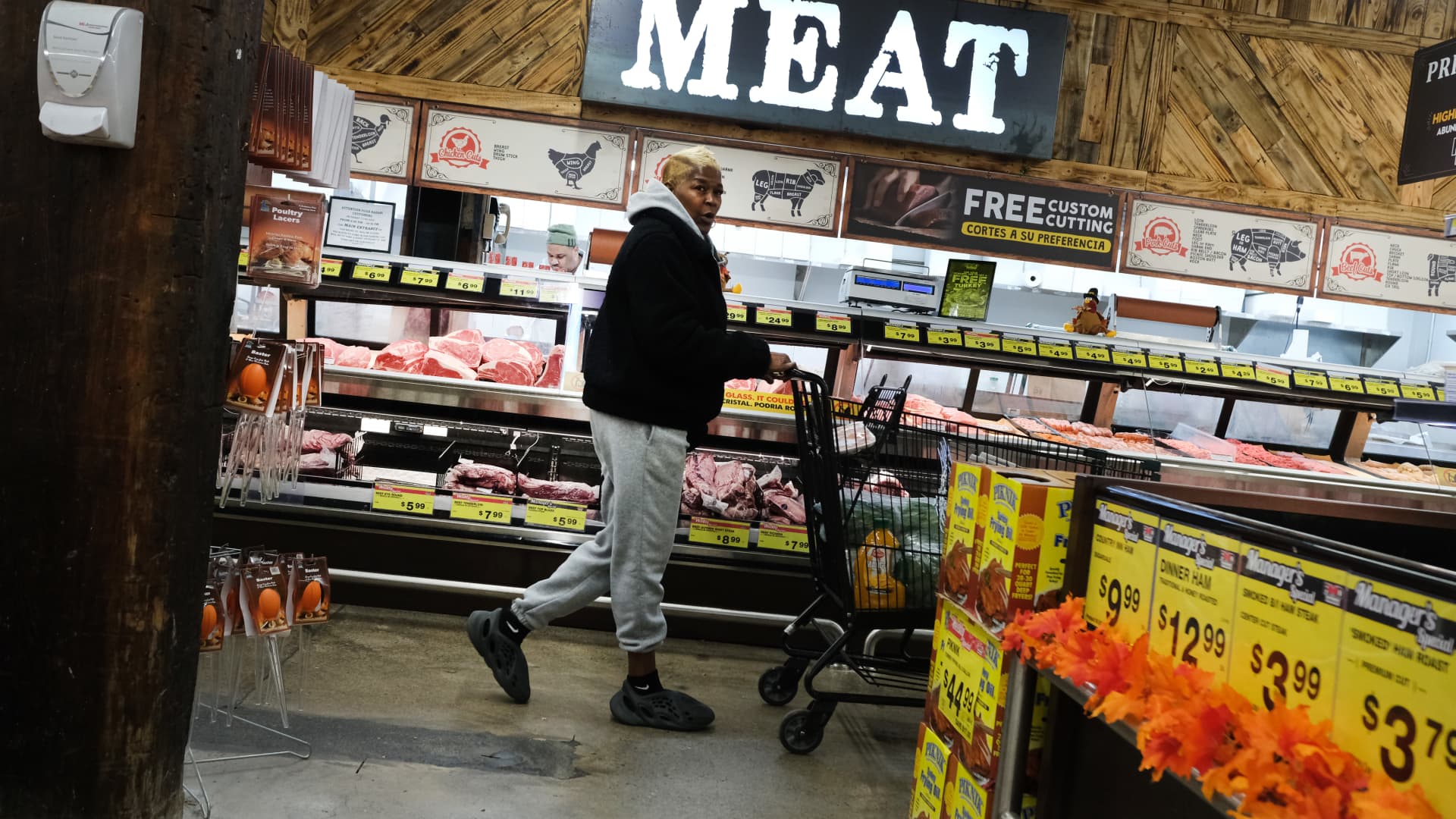Consumer inflation likely cooled in November, but prices continued to rise at a still high rate, particularly for services.
Economists expect the consumer price index rose by 0.3% in November, or at an annual pace of 7.3%, according to Dow Jones. That’s down from 7.7% in October. When excluding food and energy, core CPI was expected to climb by 0.3%, or 6.1% year-over-year, compared with October’s 0.3% gain, or an annual rate of 6.3%, according to Dow Jones.
The inflation report is expected at 8:30 a.m. ET Tuesday, as the Federal Reserve begins its two-day meeting. The central bank is widely expected to raise rates by a half percentage point Wednesday afternoon, and economists mostly expect the Fed to stick with the 50 basis point increase even if the CPI report is hotter. A basis point equals 0.01 of a percentage point.
“I think if the market sees something in line, all is good,” said Mark Cabana, head of U.S. rate strategy at Bank of America Merrill Lynch. “If the theme holds, rates [bond yields] probably still decline a bit. But if we see something that surprises to the upside, I think that would generate a more sizeable market response because it would be questioning the theme the market has really latched on to — which is that inflation has peaked.”
Economists expect the Fed will keep raising interest rates until the fed funds target rate edges to 5% or slightly more. The fed funds target range is currently 3.75% to 4%. A hotter or lower CPI report is not likely to sway the Fed for this meeting, but economists say it could be a signal about the longer-term trajectory for interest rates.
Stocks were higher Monday, and Treasury yields were also higher ahead of Tuesday’s CPI report. Bond yields move opposite price. The 2-year note yield, which most reflects Fed policy, jumped to 4.39% Monday, up 0.06 of a percentage point.
Fed Chairman Jerome Powell holds his regular post meeting press conference Wednesday at 2:30 p.m. ET, a half hour after the Fed releases its policy statement and its latest economic and interest rate forecasts.
“I think it will be another benign print. I’m pretty neutral on this report,” said Aneta Markowska, chief financial economist at Jefferies. “It feels like that risks are asymmetrically skewed toward the high side. I think if you get a higher print, I think the [stock] sell-off is disproportionately stronger.”
Markets will be largely focused on inflation coming from services, excluding real estate, since Powell highlighted that recently.
“Powell pretty much told us last week that we know core goods will continue to slow. We know housing will eventually slow as the decline in market rents eventually comes through. The one piece we don’t have confidence in slowing is core services ex-housing,” said Markowska.
The Jefferies economist said that component of the inflation report is key, since it includes the areas that are driven by wage inflation, like transportation, medical services, education and recreation. She said core goods inflation should slow, and some price inflation in services will show signs of abating. Hotel rates are one area where inflation could slow, and economists expect pandemic-related price jumps should continue to unwind, including in used automobiles.
“We know it’s going to be better inflation data. It’s going to be cooler. That’s great, but it’s going to be about getting down into a lot of details to see where there is inflation and where there isn’t,” said Diane Swonk, chief economist at KPMG. Swonk said the data is unlikely to be reflected in the Fed’s quarterly forecasts, expected Wednesday afternoon. But a hotter or weaker number could still influence other communications from the Fed.
“They will have already pulled it apart by the time they meet. They will be discussing it,” said Swonk. “It could shade the tenor, the nuance with which Powell delivers his press conference.”
Swonk said the data could continue to be noisy and inconclusive about where inflation is going.
“Unfortunately, it will be less definitive than we would like because we know there are some distortions in it,” she said. “The more important issue is whether there is something happening in that non-shelter service component that is more systemic than what the Fed is looking at.”
Swonk said it will important to see whether there is a significant downward movement or inflation is plateauing, which would also be positive compared to rising prices.
“We’re going to look at the things that are most dependent on wages,” she said. “It means looking at everything from restaurant costs, hospitality to hotel rooms, hair cuts and personal care.”
Areas where there was the most inflation, like energy, should continue to cool off. Energy was up 1.8% in October.
